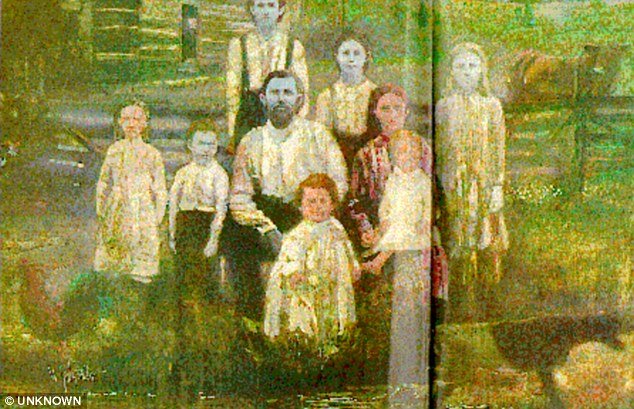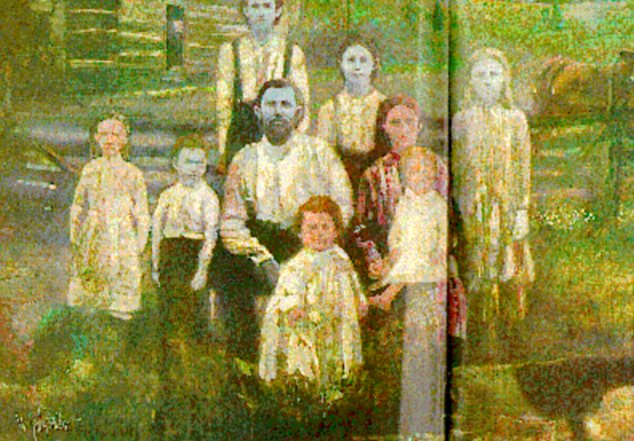Home Tags Posts tagged with "rare condition"
rare condition
Kate Middleton is being treated in hospital for a very severe form of morning sickness called hyperemesis gravidarum.
Hyperemesis gravidarum (HG) is a rare condition believed to affect up to 2% of women in pregnancy and is a severe form of morning sickness.
It tends to be more common in young mothers, women who are in their first pregnancy, and those with multiple pregnancies.
Women with HG often lose weight – usually over 10% of their body weight – and feel tired and dizzy.
They may also find they are passing water less often than usual, and the main risk is dehydration which can lead to headache, palpitations and confusion.
There is also a risk of nutritional deficiencies.
Then symptoms are severe, admission to hospital may be needed for observation and to treat dehydration with intravenous fluids.
This usually only means a few days in hospital.

Kate Middleton is being treated in hospital for a very severe form of morning sickness called hyperemesis gravidarum
Unlike most morning sickness, HG usually persists past the first trimester of pregnancy, and typically subsides by week 21 of pregnancy – although it can last much longer.
However, leading doctors say that along with more ordinary morning sickness, it is a sign the pregnancy is progressing.
Dr. Peter Bowen-Simpkins, consultant obstetrician and medical director of the London Women’s Clinic, says: “It is almost always a positive sign that the pregnancy is progressing well.
“The sickness is thought to be due to a rise in hormone levels. It normally occurs during weeks six and eight of pregnancy, when the placenta takes over production of hormones from the ovaries.
“It generally continues until around 12 or 14 weeks, but if it stops before, it can – although not always – be a sign that all is not well.”
Lizzie Velasquez has been ridiculed, stared at in the street and called “the world’s ugliest woman” by insensitive cyber bullies.
But, after years of misery and self doubt, Lizzie Velasquez says she can finally shrug off the hurtful comments about her looks as “just words”.
Lizzie Velasquez, from Austin, Texas, was born without adipose tissue – meaning she has no body fat and, despite eating up to 60 small meals a day, remains at a delicate 58 lbs.
The rare condition still baffles doctors and is thought to affect just two other people worldwide.
Lizzie Velazquez has now written a second book about her struggle to be accepted and hopes it will help others in a similar position.
In Be Beautiful, Be You, the 23-year-old college senior shares advice on being unique, how to make and keep good friends and how to deal with bullying and negativity.
Speaking to Dr. Drew Pinsky on Tuesday night about her experiences, Lizzie Velasquez said when cyber bullies first started attacking her online it was hard.
She told Dr. Drew: “I’m human… of course these things are going to hurt… (but) I’m not going to let those things define me.”

Lizzie Velasquez was born without adipose tissue, meaning she has no body fat and, despite eating up to 60 small meals a day, remains at a delicate 58 lbs
Eventually Lizzie Velasquez realized the people issuing the hurtful comments online were just cowards hiding behind a computer screen.
“At the end of the day, these are just words,” she told Dr. Drew.
“If they are so proud, then they should show their face.”
When asked how she deals with being constantly stared at in the street, Lizzie Velasquez said: “I’m starting to want to go up to these people and introduce myself or give them my card and say, <<Hi, I’m Lizzie – maybe you should stop staring and start learning>>.”
Lizzie Velasquez also revealed she does not have any desire to look like a beautiful celebrity.
She said: “I feel I’m really glad I don’t look like the celebrities out there who are beautiful, because there are a lot of stereotypes attached to that.
“People think <<she’s so pretty, she must be really dumb>>. Since I don’t look like that it’s better because people can get to know the real me.”
Lizzie Velasquez was born four weeks prematurely weighing just 2 lb 10 oz. Doctors found there was minimal amniotic fluid protecting her in the womb.
“They told us they had no idea how she could have survived,” her mother Rita Velasquez, 45, a church secretary, said.
“We had to buy dolls’ clothes from the toy store because baby clothes were too big.”
Doctors could not make a diagnosis so they prepared Lizzie Velasquez’s parents for the worst.
“They told us she would never be able to walk, talk or have a normal life,” said her mother, who has two other children with Lizzie’s father Lupe – both children are of average height and weight.
Despite the grim prognosis Lizzie Velasquez’s brain, bones and internal organs developed normally but she was always very small.
At the age of two she was still only 15 lbs – the same as the average five-month-old baby.
Born with two brown eyes, when Lizzie Velasquez was four the right began to cloud and change hue. Doctors then discovered she had gone blind in that eye.
“They still don’t know why it happened but now I have one blue and one brown eye.”
Lizzie Velasquez’s case has fascinated doctors all over the world and she is part of a genetic study run by Professor Abhimanyu Garg at the University of Texas Southwestern Medical Center in Dallas.
Prof. Abhimanyu Garg and his team now believe Lizzie Velasquez may have a form of Neonatal Progeroid Syndrome (NPS), which causes accelerated ageing, fat loss from the face and body, and tissue degeneration. People with PRS often have triangular and prematurely aged faces with a pointy nose.
He said: “I am aware of a small number of people that have similar conditions to Lizzie but each case is slightly different.
“We cannot predict what will happen to Lizzie in the future, as the medical community are yet to document older people with NPS.
“However Lizzie is lucky to have healthy teeth, organs and bones so the outlook is good. We will continue to study her case and learn from her.”
Lizzie Velasquez doesn’t take medication but she relies on vitamin supplements and iron to stay healthy. It is thought she should be able to conceive naturally without passing the condition to her children.
Her new book is out on September 13.
[youtube QOFg-fmnMlc]

The story of blue family began when French orphan Martin Fugate settled on the banks of Troublesome Creek in 19th century and married a red-haired woman named Elizabeth Smith
Ben Stacy came from an isolated family in Kentucky whose members were born with a rare condition that discolored the skin, as a result of a coincidental meeting of recessive genes, intermarriage and inbreeding in the 1800’s.
Ben Stacy was born in 1975 and although the color soon diminished from him, his lips and fingernails still went blue when he became cold or angry as a child.
The story began when French orphan Martin Fugate settled on the banks of Troublesome Creek to claim a land grant in the early 19th century and married a red-haired woman named Elizabeth Smith.
Elizabeth Smith had a very pale complexion – and their union brought on the “methaemoglobinaemia” genetic mutation, also known as met-H, which reduces an individual’s ability to carry oxygenated blood.
Minnesota-based blood expert Dr. Ayalew Tefferi said the whole story is “fascinating” and shows how society and disease can intersect – as well as the “danger of misinformation and stigmatization.”
“If I carry a bad recessive gene with a rare abnormality and married, the child probably wouldn’t be sick, because it’s very rare to meet another person with the (same) bad gene,” he told ABC News.

Ben Stacy came from an isolated family in Kentucky whose members were born with a rare condition that discolored the skin
Ben Stacy was born and taken to the University of Kentucky Medical Center, where doctors were amazed by his blue skin and quickly prepared a blood transfusion before his grandmother butted in.
The man explained that he looked like his ancestors in Troublesome Creek and his great-grandmother Luna, who died aged 84, was once called “the bluest woman I ever saw”, reported ABC News.
Ben Stacy, 37, works as a water plant supervisor for the University of Alaska in Fairbanks. He gained a wildlife management degree from Eastern Kentucky University.
The Fugate family tree shows Martin and Elizabeth had a blue boy called Zachariah who married his mother’s sister. Their son named Levy married into a nearby family and they had eight children.
One of these children was Luna, who married John Stacy and had 13 children. Ben Stacy comes from this family line, reported ABC News. His mother Hilda Stacy, 56, lives in Hazard, Kentucky.
There are other relatives in the Stacy line still alive in Virginia and Arkansas. Ben Stacy has a wife named Katherine Stacy in Alaska and they appear to have four children.
As eastern Kentucky has become vastly more populated than the early 19th century, and as more genes are married into the Fugate family tree, there were far fewer children born with the condition.
The blue people in Kentucky began to disappear in the early 20th century as families moved apart and the disease therefore became less common as inbreeding reduced, reported ABC News.
Looking at the old family portrait, they appear to have been either Photoshopped or made up to mimic characters from children’s cartoon the Smurfs, but science proves that the condition is real.
The family was first discovered in 1958 when Luke Combs, who was a descendant of another branch of the Fugates, took his white wife to a hospital and doctors ended up paying more attention to him.
“Luke was just as blue as Lake Louise on a cool summer day,” Dr. Charles H. Behlen II said in 1974. Fortunately for the sufferers, there are no serious problems associated with the disease.
[youtube 4iJVWMR4Uq0]
Ryan Marquiss is the first child in the world to survive being born with his heart outside of his body.
Having the heart outside the body, ectopia cordis, is an incredibly rare condition and usually babies are stillborn or die within three days.
Ryan Marquiss’ heart also hadn’t developed and so he only had half a heart – a combination of defects which is so rare that the boy is the only one of his kind in the world.
Doctors advised his devastated parents to terminate the pregnancy when Ryan Marquiss’ mother was just 12 weeks pregnant, but they bravely refused.
And it is a gamble that has paid off, as the boy is just about to celebrate his third birthday.
His mother, Leighann Marquiss, 34, said: “We wanted to let nature take its course, so we refused to have the termination.
“We knew it would be a miracle if he survived the birth but we were unwilling to take matters into our own hands.
“The doctors told us that no baby with Ryan’s combination of defects had ever survived, so the fact that he is here with us today, is just amazing. He really has astounded everyone.”
Doctors discovered the problem at 12 weeks into his mother’s pregnancy.

Ryan Marquiss is the first child in the world to survive being born with his heart outside of his body
The incredibly rare defect, ectopia cordis, affects only 8 in every million births and 90% of these are stillborn or die within three days.
And adding to that Ryan was also suffering from hypoplastic right heart syndrome, where only the left side of the heart has developed properly.
Leighann Marquiss, who lives with husband Henry, 34, and their other children Natalie, 7, and Ainsley, 5, in Pennsylvania, USA, said: “All the odds were stacked against him. We knew that it was a miracle that he had been born alive with his heart outside his body, but then to have another life-threatening condition of only having half a heart meant that everything was against him surviving.”

Doctors advised Ryan Marquiss’ parents to terminate the pregnancy when his mother was just 12 weeks pregnant, but they bravely refused and the boy the boy is just about to celebrate his third birthday
Doctors at the Children’s National Medical Centre in Washington delivered him at the end of February 2009 by caesarian, helped by a team of 30 medical professionals.
Dr. Mary Donofrio, Director of the fetal heart programme at the Children’s National Medical Centre said: “If he survived the birth his exposed heart likely would become infected and kill him. Even if infection didn’t happen his heart had one working ventricle and he would require open heart surgery to rewire the blood flow through it.
“I told the family right from the start that if he survived, it was a miracle.”
Leighann Marquiss said: “His heart was protruding out of his chest cavity. The heart was only covered by a thin membrane.
“But he was alive and we just had to pray that he would carry on fighting.”
Ryan Marquiss had to have an operation at just two weeks old to have a central shunt placed in his heart to ensure proper blood flow.
Then he underwent more than a dozen operations over the next two years. He had operations to replumb his heart so that the half a heart would do the job of a full size heart. Doctors also put tissue expanders under his skin to produce more skin so they could use it to cover his exposed heart.
Mrs Marquiss said: “He has done amazingly well. He has been so brave throughout it, and his sisters have kept him going too. They have been to see him in hospital and made recordings of themselves at home, so Ryan could hear them.
“He just kept on fighting. He refused to die, and he kept on proving everyone wrong.
“He will need some sort of chest protection operation in the future but it may be overcome by just wearing some sort of protective padding when he plays sport. He won’t be a competition athlete, but we are hoping he can run around on the playground and climb trees like any other child.”
Ryan Marquiss’ case has now been reported in a medical journal. Doctors believe that his survival offers hope for other babies with serious heart defects.
In the future he may require a heart transplant, but at the moment, he is progressing well.
His mother said: “He really is a medical miracle. When I look at him running around the playground and playing on the climbing wall, I praise God. Every day with Ryan is one we were told we wouldn’t have. So we cherish each moment.”
The extraordinary story of Appalachia’s “Blue Family” began back to the early 1800’s, when an isolated family from eastern Kentucky – who can trace their roots back to a French orphan – started producing children who were blue.
As a result of a coincidental meeting of recessive genes, intermarriage and inbreeding, members of the Fugate family were born with a rare condition that made them visibly discolored.
The mystery behind the astonishing picture of the Fugates, which has been baffling people for years, appears to have finally been solved.
The story began when Martin Fugate, a French orphan, settled on the banks of eastern Kentucky’s Troublesome Creek to claim a land grant in the early 19th century.
Martin Fugate married a red-haired American named Elizabeth Smith – who had a very pale complexion – and their union formed a genetic mutation that resulted in their descendants being born with blue skin.
Looking at the portrait, they appear to have been either Photoshopped or made up to mimic characters from children’s cartoon The Smurfs, but science proves that the condition is in fact real.

Fugate family developed a rare skin discoloration as a result of a coincidental meeting of recessive genes, intermarriage and inbreeding
Called methaemoglobinaemia (commonly known as met-H), the condition reduces the individual’s ability to carry oxygen in their blood. As a result, their blood is darker than the color typically found running through people’s veins.
Because the Fugate family lived in such an isolated part of the Kentucky, they intermarried with a neighboring family for generations which led to a relatively “pure” gene pool where the met-H gene appeared much more frequently.
The family was first discovered in 1958 when one of the blue men, Luke Combs, who was a descendant of another branch of the Fugate family, took his white wife to the University of Kentucky Hospital and doctors paid more attention to him than his wife.
“Luke was just as blue as Lake Louise on a cool summer day,” Dr. Charles H. Behlen II told the Tri-City Herald in 1974.
Aside from the stark discoloration of the carrier’s skin, there are no serious problems associated with the disease.
In 1980, a counter-intuitive solution was discovered where the blue person drinks a chemical-filled solution that is itself blue. This then turns the carrier’s blood into a “normal” red hue which is then reflected in a change in skin tone.
Because of the dispersion of fluids, the solution only lasts for about a day so the carrier would have to drink a serving every day.
As eastern Kentucky has become vastly more populated than the early 19th century, and as more genes are married into the Fugate family tree, there were far fewer children born with the condition.
That said, the recessive met-H gene lingers to this day, but it is statistically insignificant now.
“They weren’t sick; it was just the way they look,” said nurse Ruth Pendergrass in the Tri-City Herald article.
“They’re normal people – they’re good people.”
How Met-H darkens blood?
The methaemoglobinaemia condition, or “met-H”, reduces someone’s ability to carry oxygen in the blood, leaving it darker than the color typically found in veins.
The Fugate family intermarried with a neighboring family for generations, which led to a relatively “pure” gene pool, often including the met-H gene.
But as Kentucky became more populated and more genes came into the Fugate family tree, there were far fewer children born blue.
The gene is still around today but has now become statistically insignificant and there are no serious medical problems associated with it.







